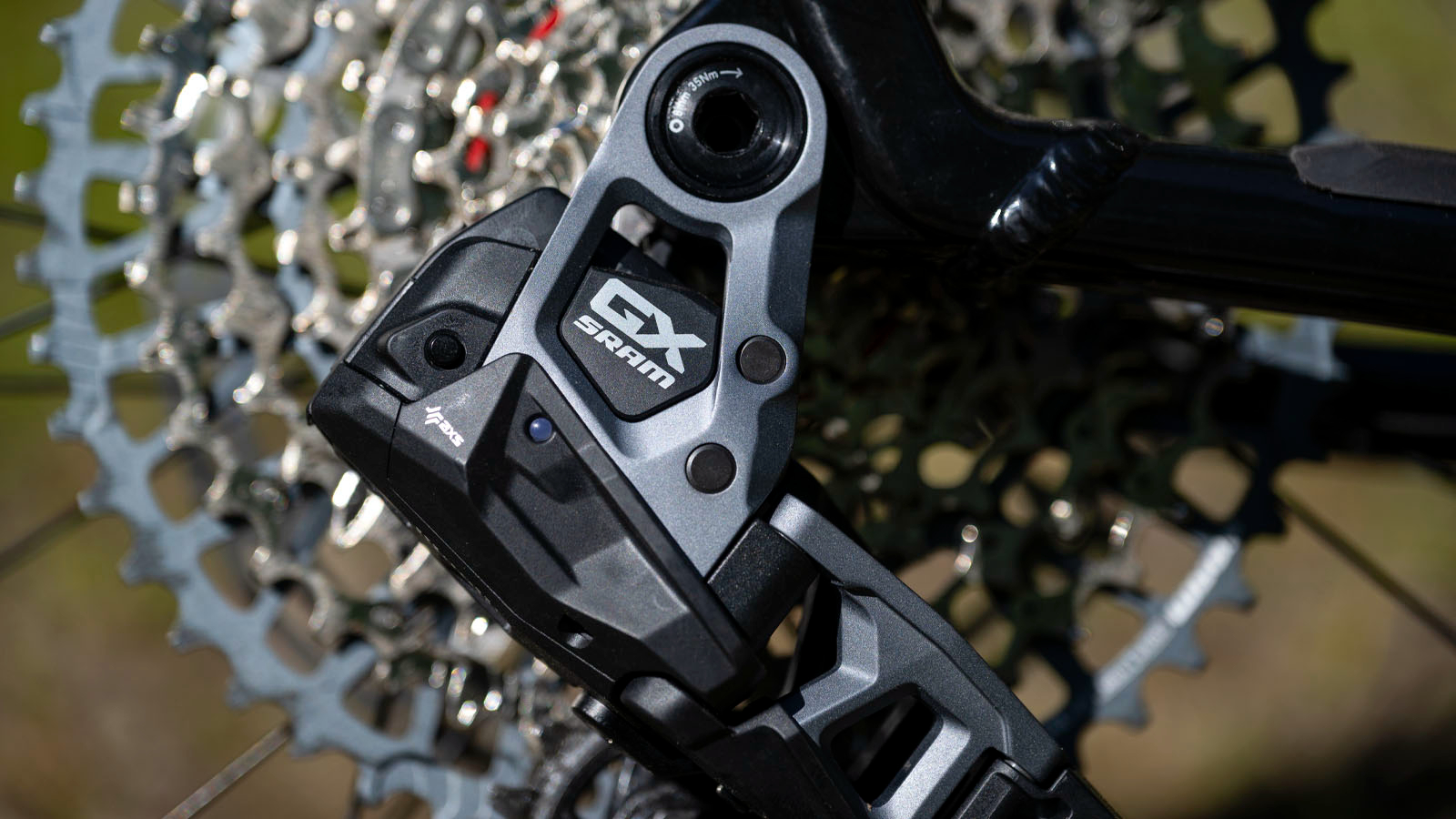
In 2019, SRAM launched its AXS wireless technology, bringing personalization and control to the drivetrain. Initially, two AXS mountain bike options were available ( XO and XX spec) along with one for road bikes (Red eTap AXS). These electronic drivetrains didn’t replace existing models though, as mechanical, cable-operated options remained for both of these premium MTB groupsets.
These first generation, premium-priced, AXS wireless drivetrains proved reliable, were easy to install and made for a cleaner handlebar set-up. Free of wires, and with batteries mounted in the rear derailleur and shifter, this technology also eliminated the added complications of internal cable routing.
A year later SRAM introduced AXS technology to its GX level, the mid-range workhorse of the brand’s groupsets. With a GX Eagle AXS upgrade kit, you could convert any of SRAM’s mechanical 1x12 Eagle groupsets to a wireless drivetrain.
Fast forward to 2023 and SRAM released the Eagle Transmission. Using all-new T-Type tech – exclusive to SRAM – along with the proven AXS system, this drivetrain is based on a hangerless interface that’s specific to frames using a SRAM UDH (Universal Derailleur Hanger). Launched initially in the premium XX SL, XX and XO levels, a more affordable GX Eagle Transmission was released a few months later.
Both GX Eagle AXS and GX Eagle Transmission work with the SRAM AXS app (and AXS Web). This allows you to connect your AXS-enabled components to a mobile app, where you can assign custom actions to your controls. An AXS-specific rechargeable battery is used for the rear derailleur, with the bar-mounted controller using a common CR2023 button battery.
So, how do GX Eagle AXS vs GX Eagle T-Type Transmission compare and which one is best for you?
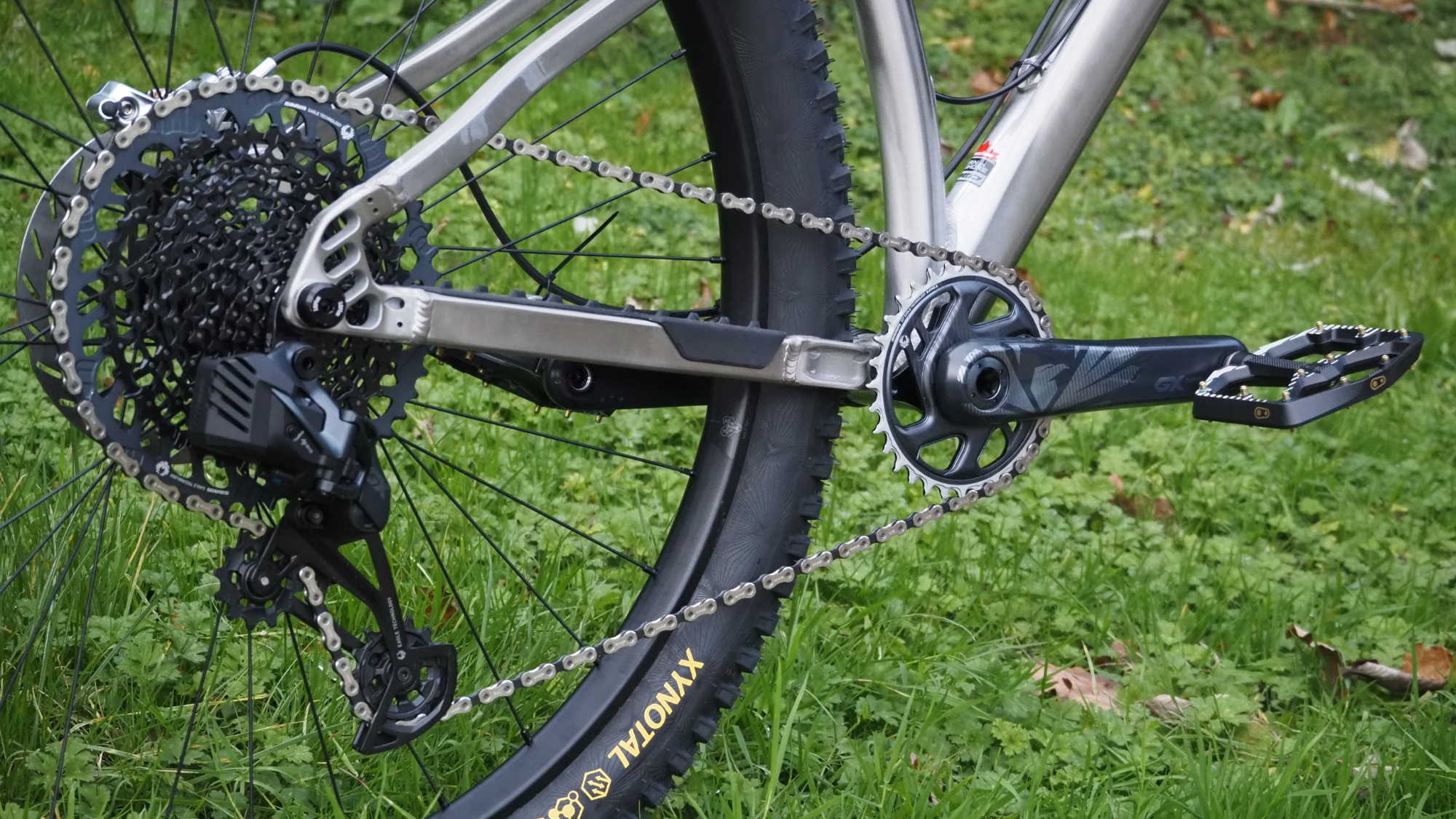
Upgrade compatibility
Upgrading from a mechanical, cable-operated drivetrain to a wireless electronic system is straightforward with GX Eagle AXS. It is compatible with all 1x12 SRAM Eagle drivetrains and is the brand’s most affordable option. The upgrade kit includes a controller (shifter), rear derailleur, battery and charger. Your existing SRAM twelve speed cassette, chain and chainring are fully compatible, so there’s no change to the chain line or further expense needed. The AXS derailleur will bolt on any regular mech hanger.
SRAM GX Transmission is a fully integrated drivetrain, with no option to make short cuts or cost savings. In addition to a specific derailleur and controller, a T-Type cassette, chainring and chain are needed for the system to function. SRAM’s T-Type Transmission works exclusively with frames with a SRAM UDH rear hanger, so this is the first consideration. This will naturally exclude bikes that pre-date 2019 production (the year the UDH was launched) although many brands have now embraced this new standard.
SRAM designed the T-Type Transmission with e-MTBs high on the agenda too, so specific chainrings and cranks are available for Bosch and Brose/SRAM motors. There’s also the reassurance that this drivetrain is fit for purpose when used on pedal-assisted e-bikes.
Compatibility winner: GX Eagle AXS will fit most current frames, while Transmission only works with UDH models.
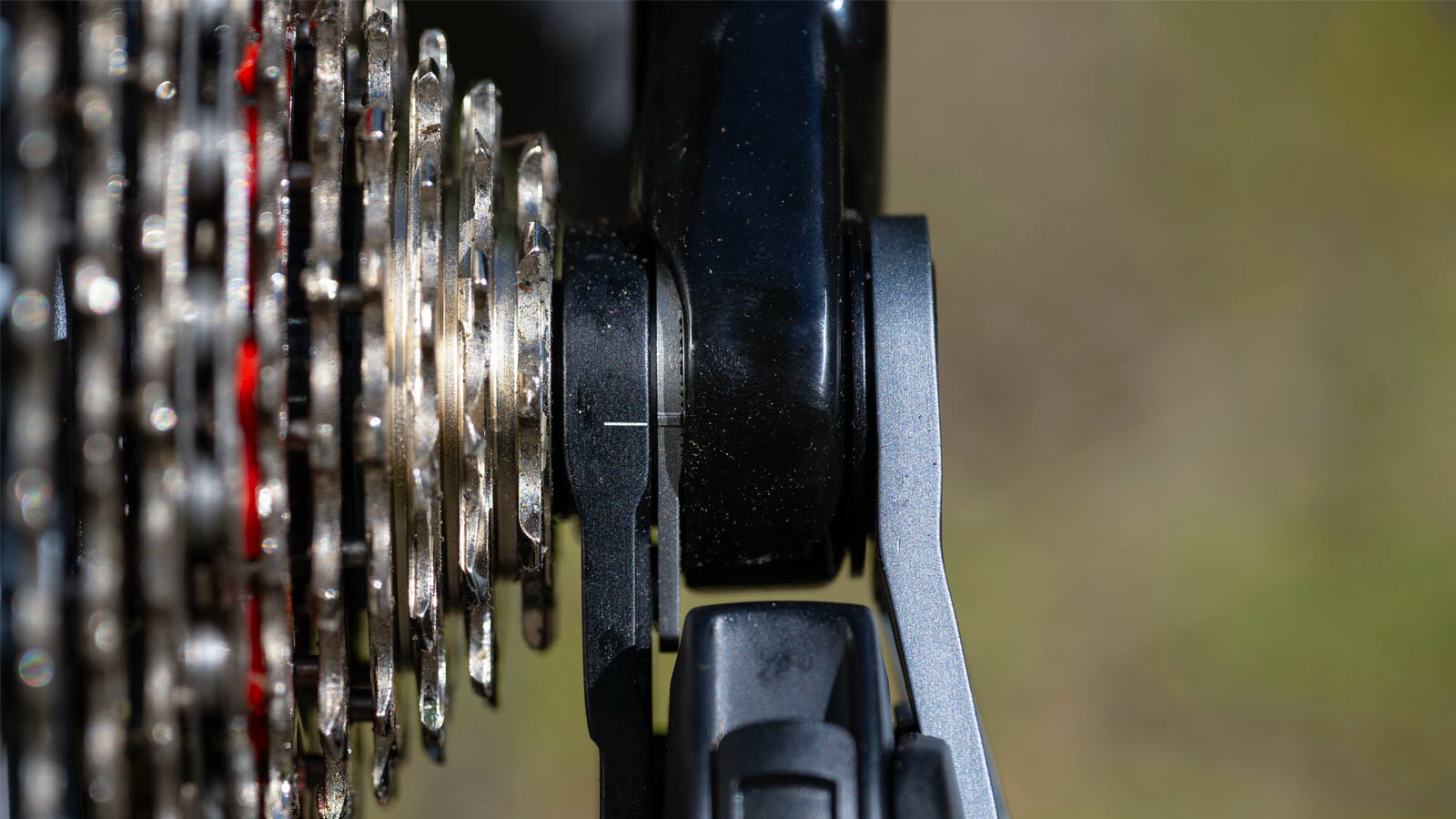
Setup and ease of fitting
Fitting GX Eagle AXS is straightforward and requires few tools. You’ll need a fresh SRAM PowerLock ‘quick link’ to split and rejoin the chain when fitting the AXS rear derailleur but otherwise it’s a case of bolting on the bar-mounted controller with either the SRAM MMX Matchmaker mount or the separate mount – both are supplied. Once the AXS battery is charged and fitted, the next step is to pair the controller and derailleur. Fine tuning of the shifting can be done with buttons on the components, or via the AXS app. You can personalize the shifting on the AXS app too – dictating which button shifts into a lower or higher gear, along with assigning a multi-shift option.
For the installation of the full GX Eagle Transmission, some specialist tools are needed along with a strict step-by-step fitting procedure. If you have limited experience with home mechanics, having a shop fit this drivetrain would be a recommendation. Removal of the UDH hanger and replacing it with a bushing is the first step but you’ll need a torque wrench to tighten the retaining bolt to 35Nm once you’ve orientated and set the derailleur correctly. Logging onto the AXS app (or AXS web) is required to identify the correct chain length and cassette set-up sprocket for proper alignment and indexing. There are no limit screws or B-tension adjustment as the system is built around the rear axle and hangerless interface. Our test bike also needed additional bottom bracket spacers as the Eagle Transmission has a wider 55mm chainline.
Ease of fitting winner: GX Eagle AXS is a more straightforward operation.
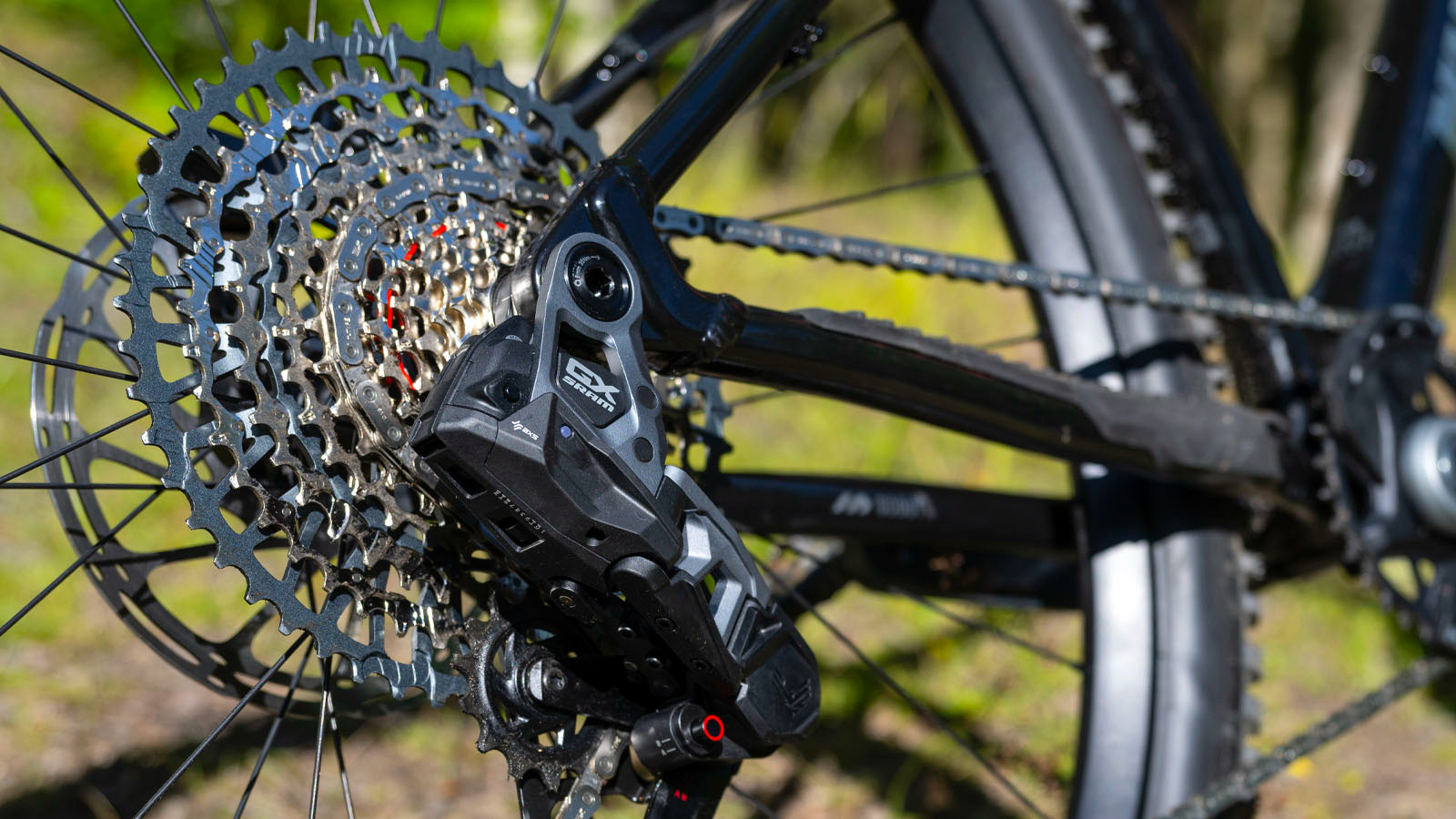
Gear ratios
If you’re upgrading to the GX Eagle AXS drivetrain then you can use any of SRAM’s 12-speed Eagle cassettes: 11-50t (on a HG freehub), 10-50t or 10-52t (both on a SRAM XD driver) will all work. You can use any size twelve speed Eagle-compatible chainring.
With GX Eagle Transmission you have to use the specific T-Type 10-52t cassette. This fits a standard SRAM XD driver but has unique mapping (ramp) technology that works only with SRAM’s Full Mount derailleur and Flattop T-Type chain. On this cassette, steps between the lower ratios have been evened out, with larger 38t and 44t sprockets replacing the regular Eagle’s 36t and 42t for the second and third gears. Out on the trail, we feel this is a noticeable improvement.
Gear ratio winner: GX Eagle AXS offers more choice, but GX Eagle Transmission has a cassette with the winning ratios.
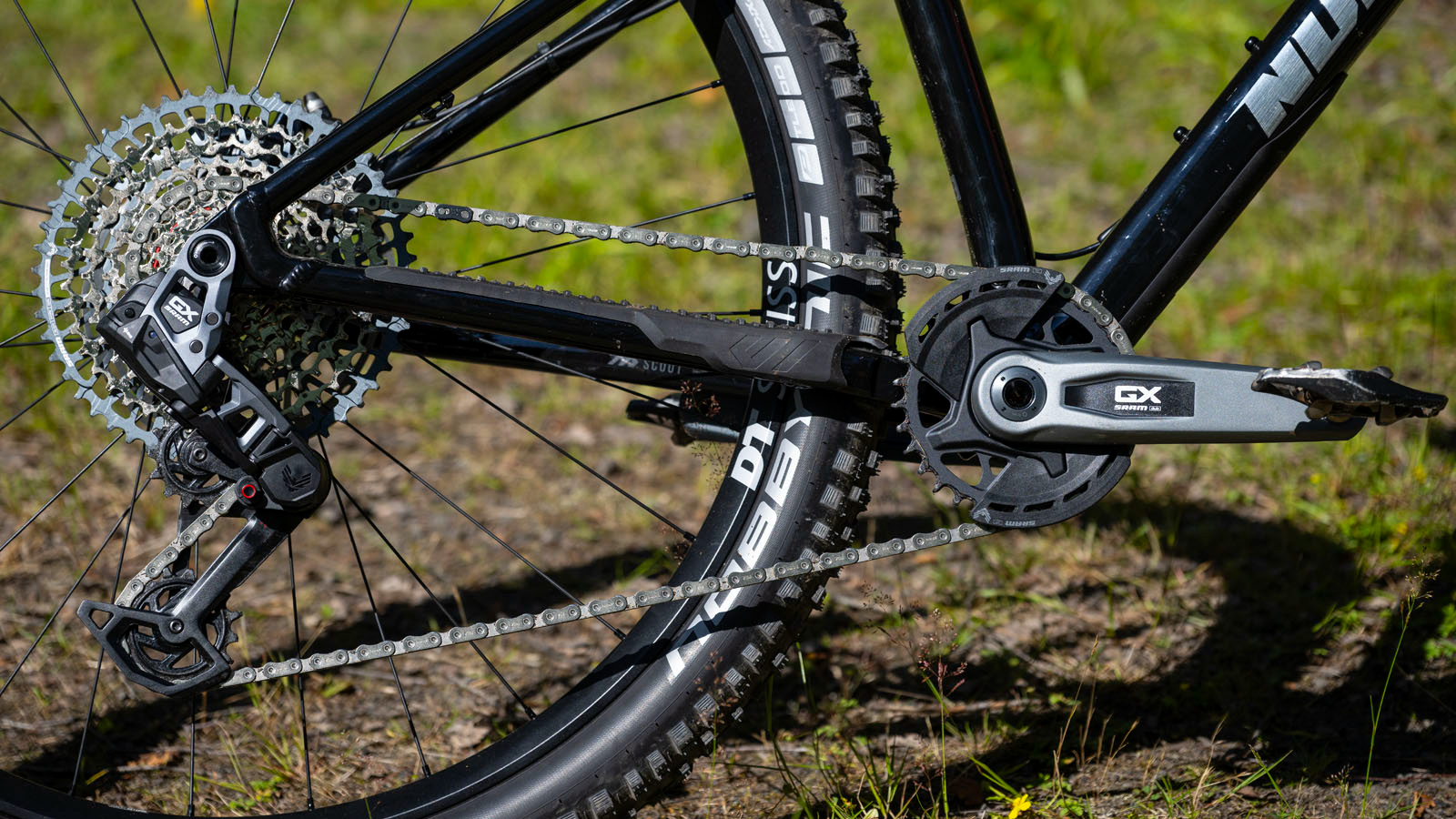
Performance
GX Eagle AXS adds wireless, electronic shifting to this mid range drivetrain. Being built around SRAM’s existing Eagle ‘eco system’ the only tech that’s changed here is the move away from mechanical gear cables. Once you’ve familiarized yourself with the controller’s paddle shape and the shifting technique you’ll find the wireless shifting consistent, regardless of the weather conditions. It’s fast and reliable but not noticeably slicker shifting under load.
SRAM has taken shifting performance to another level with the GX Eagle Transmission. The combination of the Full Mount derailleur, cassette mapping and flat top chain create a drivetrain that is not only quick shifting but incredibly smooth and quiet. When changing gear under load the shifting is consistent, faultless and very impressive. With GX Eagle Transmission, there’s no need to ease off the pedaling and get the gear shift timing spot on – you can make some last minute decisions and get away with it.
Performance winner: GX Eagle Transmission takes shifting to another level.
Durability
With the derailleur from both of these wireless drivetrains costing over $350 / £300 / €340, its vulnerability is naturally a concern. Both GX Eagle AXS and GX Eagle Transmission derailleurs use an Overload Clutch that instantly disengaging the motor on impact, automatically moving it inboard and hopefully keeping it intact. Seriously scuffed test derailleurs imply that this works. However, with GX Eagle AXS you can still break a hanger and put the derailleur into the rear wheel.
The way the GX Eagle Transmission’s Full Mount derailleur is fitted to the frame – sandwiched around the rear dropout and aligned with the rear axle – adds extra reinforcement, with the aim to eliminate failures from heavy impacts. Its robust construction helps too, and longevity is boosted further as it’s rebuildable, with good spares back up. We're still putting the miles in on our test setups, but SRAM claims the T-Type cassette and chain should have a longer life than standard Eagle components too.
Durability winner: GX Eagle Transmission.
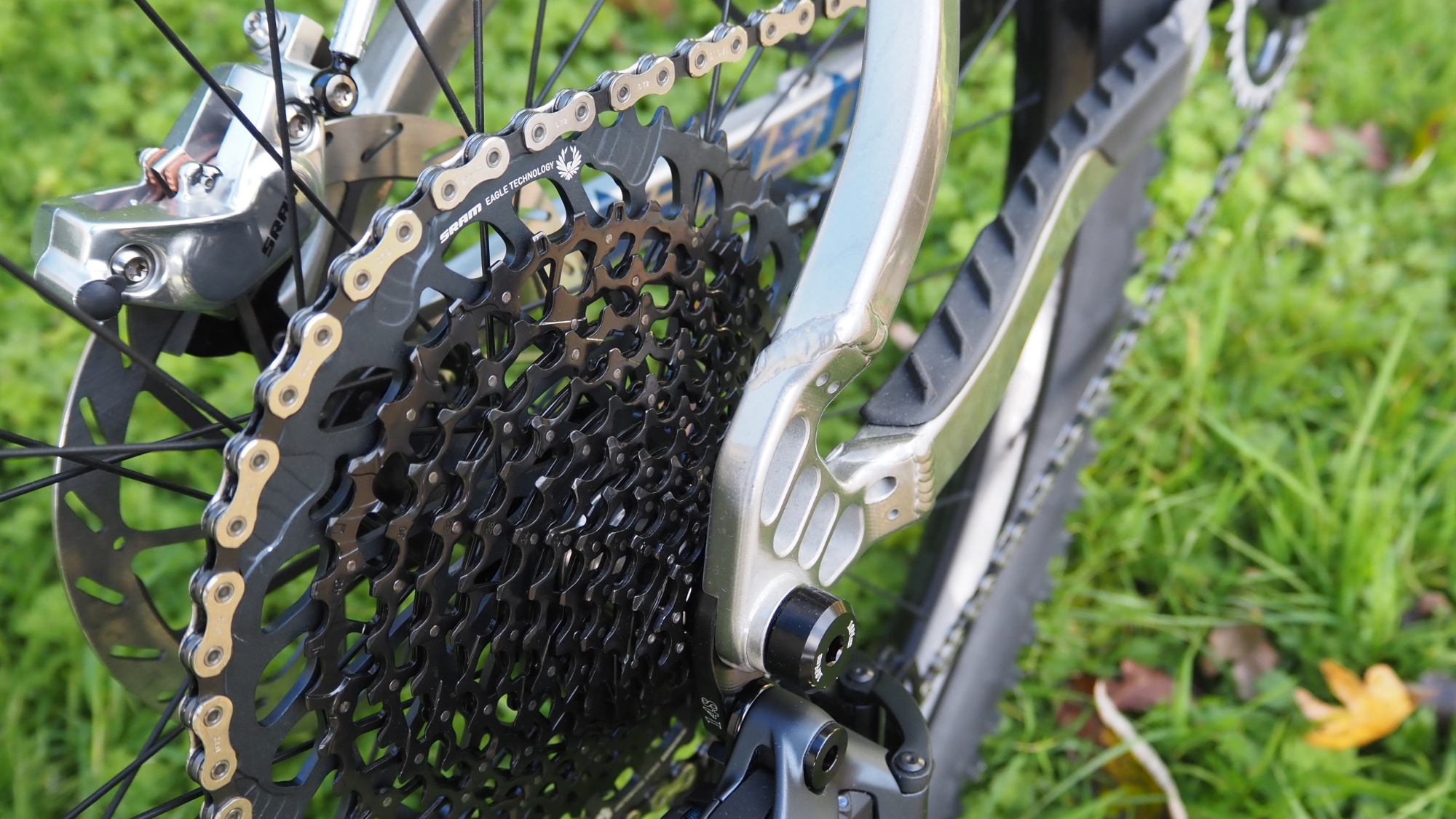
Weights
Weight winner: A close call but GX Eagle AXS is 97g lighter.
Overall
Both of these wireless SRAM mountain bike drivetrains are slick operators, with mature and proven electronic technology and a free app to personalize functionality and link AXS-enabled components.
The GX Eagle AXS is the more affordable option, is simple to install and plays well with components from other mechanical Eagle drivetrains. You can fit it to any bike with a regular mech hanger. It gives you fast, wireless, electronic shifting without being tied into a complete system.
With GX Eagle AXS you get a fully evolved system, with electronic shifting being just one element to it. Here you get faultless gear changing in almost any situation, even under a heavy load, along with added durability and robustness. You can mix components from T-Type Transmissions further up SRAM’s range but you can’t break away the system – it’s all or nothing.
Overall winner: Next-level performance means a win for the fully-integrated GX Eagle Transmission.
The final reckoning...
There is one crucial comparison we've not mentioned yet, and yes it's price. At the time of writing, a GX Eagle AXS upgrade kit (crankset not included) will cost you $633 / £584 / €654 – though you are likely to find it at a reduced deal price.
A GX Eagle Transmission groupset will set you back significantly more at $1,099 / £1,180 / €1,300 – but despite only being released earlier this year, there are some decent deals to be had right now.
Deal prices or not, GX Transmission tends to cost twice as much as GX AXS, but for our money, if you've got the budget, GX Eagle Transmission is well worth the extra investment. That said, regular GX AXS is an excellent upgrade too.







